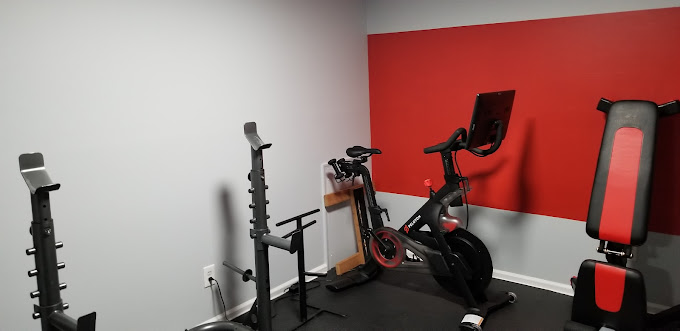When it comes to creating a warm, inviting atmosphere in your Evesham, NJ home, the walls play a huge role. A fresh coat of paint can completely transform a space, making it feel brighter, cleaner, and more modern. However, achieving smooth, flawless walls is not as simple as picking a color and rolling it on. The real magic lies in the preparation, the techniques, and the finishing touches. Done right, your walls will not only look beautiful but will also stand the test of time. This guide will walk you through expert interior painting secrets that ensure professional-quality results every time.
Key Takeaway: Proper preparation, quality materials, and professional techniques are essential for smooth, long-lasting interior walls.
Preparing Your Walls for a Perfect Finish
Cleaning and Repairing Surfaces
The first secret to a smooth finish is starting with a clean canvas. Dirt, grease, and even small amounts of dust can prevent paint from adhering properly. A gentle cleaning solution and a soft sponge are usually enough for most walls, but kitchens and high-traffic areas may require a degreaser. After cleaning, inspect the walls for imperfections like cracks or holes. Professional painters often recommend using a spackling compound for minor repairs or, for extensive issues, seeking drywall installation and repair services in New Jersey to create a flawless base.
Sanding for Smoothness
Even if your walls look fine after patching, sanding is essential for achieving that silky finish. Use fine-grit sandpaper to smooth patched areas and feather the edges so they blend seamlessly with the rest of the wall. This extra step helps avoid visible bumps under the paint, which can be glaringly obvious in certain lighting.
Priming: The Underestimated Step
Skipping primer is one of the biggest mistakes homeowners make. Primer not only improves paint adhesion but also helps achieve an even color tone and hides imperfections. For darker walls or porous surfaces, a high-quality primer is indispensable. It saves time and effort in the long run by reducing the number of topcoats needed.
Choosing the Right Paint and Tools
Understanding Paint Sheens
The finish of your paint can dramatically impact the look and feel of a room. Flat or matte finishes are great for hiding imperfections but aren’t as washable, while satin and eggshell offer a perfect balance between durability and aesthetics. Gloss finishes are best reserved for trim and doors. For residential interior painting, selecting the right sheen can make all the difference in both appearance and maintenance.
Investing in Quality Paint
Not all paints are created equal. High-quality paints contain better pigments and resins, which means better coverage, fewer coats, and longer-lasting results. While it may be tempting to save a few dollars on cheaper options, you often end up using more paint and spending extra time correcting uneven coverage.
Using Professional-Grade Tools
Quality brushes and rollers play an equally important role. Look for brushes with tapered bristles for cutting in and rollers with the right nap length for your wall texture. Professionals swear by angled sash brushes for precise edges, ensuring that corners and trim lines are neat and clean.
Techniques That Make a Difference
Cutting In Like a Pro
“Cutting in” refers to painting the edges where rollers can’t reach, such as along ceilings, trim, and corners. A steady hand and the right brush make this process easier. One technique is to load the brush lightly, then start away from the edge and work inward before carefully tracing the line.
Maintaining a Wet Edge
One of the most common causes of streaks and lap marks is letting the paint dry unevenly. Always maintain a “wet edge” by overlapping each stroke slightly before the previous one dries. This helps blend the paint seamlessly for a uniform look.
Applying Multiple Thin Coats
Instead of slathering on one thick coat, apply two or even three thin coats. This approach ensures even coverage and minimizes drips or roller marks. It takes a little more time but yields a smoother, more durable finish.
Advanced Tips for Flawless Walls
Managing Lighting and Shadows
Lighting can highlight imperfections you didn’t notice during painting. To avoid surprises, inspect walls under natural light and artificial lighting during prep and after each coat. Adjusting your technique early can prevent costly touch-ups later.
Protecting Trim and Floors
Use high-quality painter’s tape to protect trim, baseboards, and door frames. Plastic or canvas drop cloths safeguard floors and furniture from accidental splatters. For a polished look, consider molding, trim, and flooring installation services in New Jersey as part of your renovation.
Addressing High-Humidity Areas
Bathrooms and kitchens require special attention due to moisture. Choose paints with mildew-resistant properties and ensure proper ventilation during and after the painting process to prolong the life of your walls.
When to Call in the Experts
Sometimes, despite your best efforts, achieving a professional finish can be challenging. Uneven walls, structural issues, or simply lack of time may warrant calling in the pros. Hiring experts for interior painting in New Jersey not only ensures precision but also saves you the hassle of prepping, painting, and cleanup. Skilled painters bring experience, tools, and techniques that guarantee a finish you’ll love for years.
Answering Common Questions
How do I prevent paint from peeling over time? Proper surface preparation is key. Clean the walls thoroughly, repair imperfections, and always apply a primer before painting. In humid areas, use paints designed for moisture resistance.
Is one coat of paint ever enough? While some high-quality paints claim one-coat coverage, most walls require at least two coats for even color and durability. Skipping the second coat often leads to uneven tones and reduced longevity.
What’s the best time of year to paint interior walls? The ideal time is when humidity levels are moderate, usually in spring or fall. Extreme humidity or dryness can affect paint drying and adhesion.
How Lighting Impacts Your Paint Finish
Lighting plays a huge role in how paint colors appear. A color that looks soft and muted in natural light might appear bold under artificial lighting. Testing paint samples in different lighting conditions helps avoid surprises after the job is complete.
The Role of Color Psychology in Interior Design
Colors influence mood and perception. Warm tones create cozy, inviting spaces, while cooler hues evoke calmness and serenity. Understanding color psychology helps you choose shades that complement the purpose of each room.
Why Professional Help is Worth It
While DIY painting can be rewarding, hiring experts for exterior painting services in New Jersey or other complex jobs ensures quality, efficiency, and lasting beauty. Professionals handle everything from prep to cleanup, leaving your home spotless and stunning.

